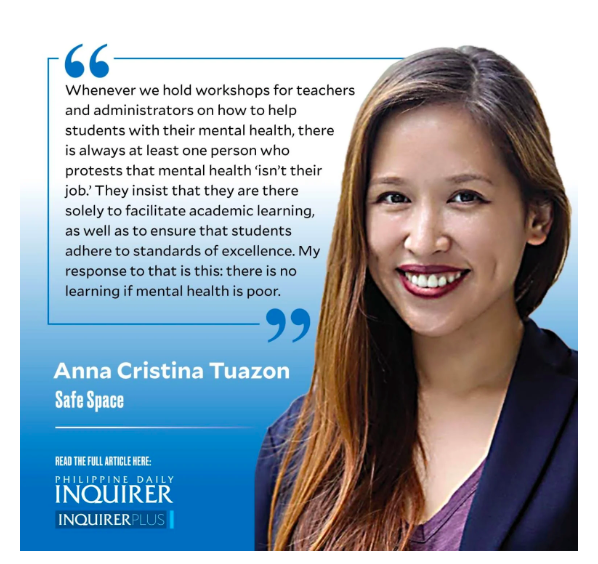Safety in our schools
A school is a child’s second home. And to borrow lines from Abbott Elementary, “sometimes it’s even the first.” This is why teachers and administrators shouldn’t just focus on delivering academic content; they should also ensure that children are safe.
Tragic events in schools have highlighted once again the issue of student safety. We typically worry about keeping children safe from adults. However, we need to expand the scope of safety to include safety from other students and from themselves. The Department of Education (DepEd) confirmed a report of a fatal stabbing among high school classmates in Quezon City. A senior high school student in Caloocan City died by suicide, rendering the school community in shock and grief. Unfortunately, they are not the first schools to experience such tragedy, and they won’t be the last.
What does it take to keep a child safe in school? How do we empower them to face their challenges in a way that keeps them safe?
DepEd has intimated that they will insert a “culture of peace” in their curriculum. Without any specific shape or form, I will assume this is mere lip service. At the very least, this seems like a misguided attempt at solving a problem without knowing how the problem came to be in the first place. Children aren’t at risk because they have not been taught the concept of peace. Children do not feel safe because their environment does not allow them to.
What exactly does it mean to genuinely cultivate a “culture of peace”? What is the point of including empty rhetoric on peace in the classrooms when most adults in their environment don’t embody this ideal? To effectively teach a child a specific value, we must first ensure that adults are embodying this value in the first place (Think of the common scenario of a parent shouting, “Don’t you dare raise your voice at me!”). To do one without the other just destroys the credibility of the admonishing adult because they will be simply regarded as hypocrites.
Adults must model this supposed culture of peace. Teachers and administrators must demonstrate compassion if students were to learn how to care for others and themselves. Adults must treat other adults well. Yes, it really is as simple as that. If children see adults caring for each other through respectful words and actions, they will do the same.
We should also change the culture of mistakes, which is unfortunately a big part of the traditional educational system. We must welcome the truth that we learn just as well—if not better—through mistakes. Mistakes aren’t just on exams; they happen in relationships as well. We should establish processes of reparation and healing once we have hurt somebody, intentionally or not. When a child approaches us and admits to a mistake or a difficulty, we should lead with compassion and care rather than disappointment and reprimands. We should guide them through their mistakes with patience and nonjudgment. To demand perfection is to demand the impossible.
Ironically, social media has made for a less tolerant environment when it comes to behavioral missteps. This has made every mistake and each faux pas an unforgivable and irredeemable error. This facilitates hopelessness, a key risk factor to suicide. At the same time, a slew of public personalities doing inappropriate and hurtful behavior, and unable to properly and sincerely apologize, have shown us that what we need in our curriculum is not necessarily a culture of peace, but a culture of personal responsibility and accountability. Once we can show that there is a way to repair, we can solve both extremes.
Whenever we hold workshops for teachers and administrators on how to help students with their mental health, there is always at least one person who protests that mental health “isn’t their job.” They insist that they are there solely to facilitate academic learning, as well as to ensure that students adhere to standards of excellence. My response to that is this: there is no learning if mental health is poor. If a student is in distress, they cannot pay attention to lessons in class. If a student cannot feel safe among their peers, they cannot engage productively in group work. If a student feels there is no hope, they will no longer attend school and drop out. A wise teacher knows how to adapt themselves around the student’s readiness to learn in order to teach effectively. In this way, supporting students’ mental health is indispensable to being a good teacher.
——————
Disclaimer: The comments uploaded on this site do not necessarily represent or reflect the views of management and owner of Cebudailynews. We reserve the right to exclude comments that we deem to be inconsistent with our editorial standards.

